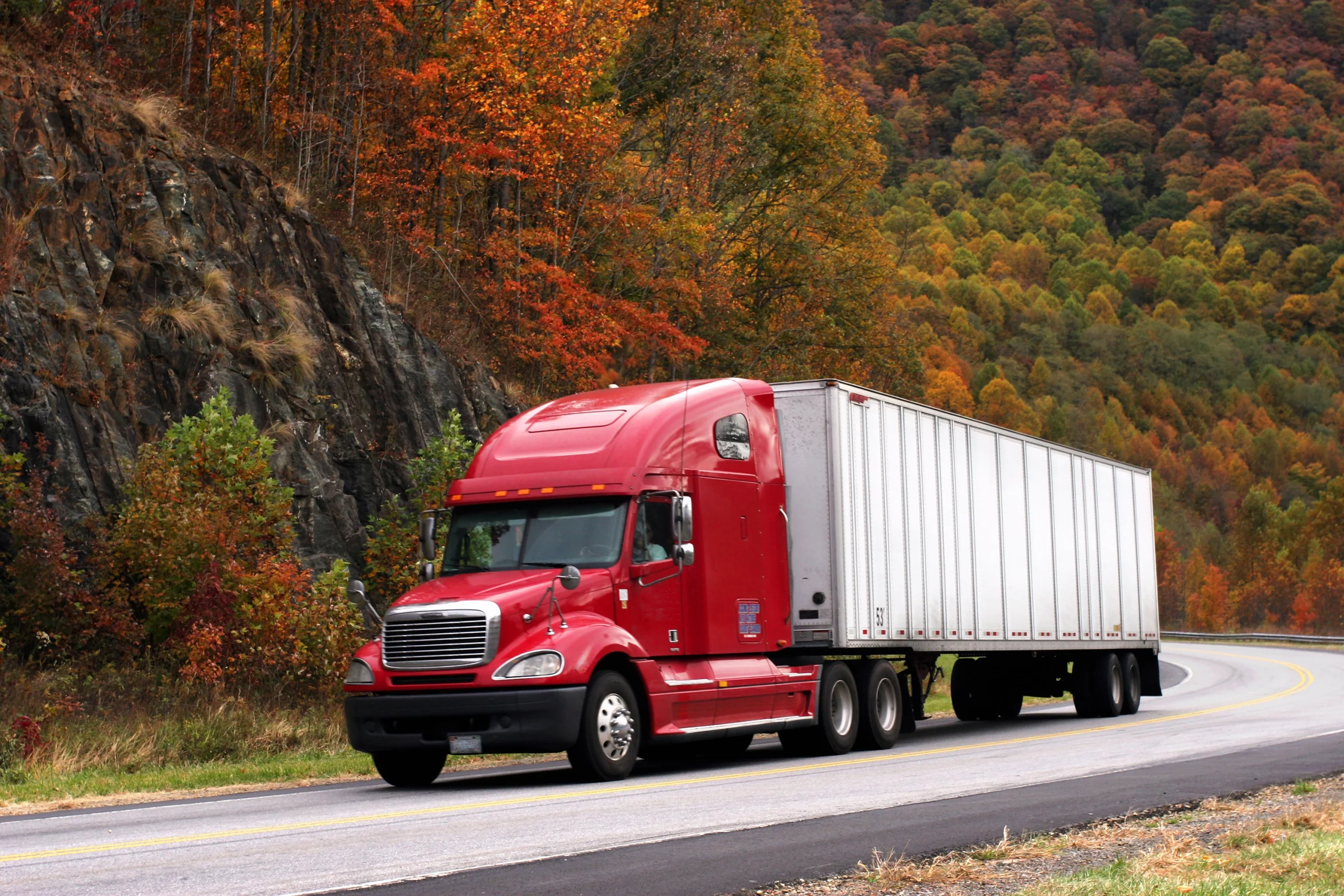TRUCKING ACCIDENTS
Negligent Hiring Truck Accidents in Colorado Springs
Colorado Springs Truck Accident Law Firm
Not so long ago, the litigation of traffic accidents was quite easy and clear,” according to the Colorado Bar Journal. It still is in certain ways. When a commercial car is involved in a truck collision, the federal requirements that have now been integrated into Colorado law, as well as the harmful instrumentality doctrine’s stance, must be considered.
A common thread runs across both conceptions. A financially responsible person with the authority to manage the operation of a car shall be held liable.
Types of Truck Accidents
The Dangerous Instrumentality doctrine in Colorado
This is a common law notion that states that the owner of a tool that is inherently harmful is accountable for any injuries caused by the item’s use. As a consequence, the Colorado Supreme Court expanded this concept to encompass motor cars in 1920, ruling that owners may be held liable for any damages caused to third parties as a result of their cars being operated negligently by others with their knowledge and cooperation.
Furthermore, whoever authorizes and permits a markedly dangerous instrumentality to be used by an individual on a public highway is liable in damages for injuries to third parties caused by the negligent operation of such instrumentality on the highway by any person so authorized by the instrumentality’s owner.
Moreover, in order to be found vicariously accountable under this concept, a person must have an identified property interest in the car —in the commercial trucking business, this makes the corporation that hired the trucker liable for any losses incurred as a result of a negligent driver.
The Federal Motor Carrier Safety Regulations (FMCSRs) mandate that trucking businesses keep track of all of its drivers’ files and provide a set of rules for what should be included in those files. Many, however, do not adhere to federal rules. Furthermore, employing risky drivers who may be paid less than a driver with a clean driving record provides a flexible financial incentive for many businesses to ignore the legislation entirely.
Free Consultation
NO FEE UNLESS WE WIN
Requirements in General
The following are the general requirements for driver qualifying files:
Every driver who works for a motor carrier must have a driver’s qualification file. It’s possible that this will be integrated with his or her personnel records.
- The application for employment of the driver.
- A copy of each state’s motor car record, complete with details.
- A photocopy of the commercial driver’s license and a copy of the driver’s road test certificate (CDL).
- A criminal background check.
- A certificate of approval from a medical examiner .
At Warrior Trucking Accident Attorneys, we will look into the driver’s work history to see whether he or she was adequately trained and skilled in driving a semi truck or commercial car that may carry up to 80,000 pounds.
As previously stated, there are Federal and Colorado regulations governing the trucking company’s due diligence in reviewing the driver’s safety history and criminal background. Failure to follow such safety regulations may result in significant financial penalties for trucking businesses.
Due to the disastrous repercussions of failing to follow state and federal requirements, all trucking businesses must take reasonable caution when recruiting drivers. Negligent hiring and retention is founded on the principle that an employer who directs activities via an employee is liable for any damage caused by reckless behavior.
When a truck driver has been working for a long time and the trucking firm has cause to know, or should have known, that the driver is incompetent or dangerous, yet nevertheless permits the employee to drive, this is known as negligent retention. Punitive damages may be awarded if the driver’s incompetence is willful and/or the employer’s awareness of the driver’s dangerous driving is lengthy enough to warrant attentive disregard.
Cases Involving Negligent Retention and Hiring
In 2007, an accident happened in Atlanta when a commercial truck driver ran a red light, stranding two cars at the traffic signal. One of the victims filed a lawsuit against the driver and the corporation as a result of the accident’s long-term agony and anguish. The trucking company’s owner admits to not conducting a pre-employment background check on the driver, as required by the FMCSA.
As a result, if the background check had been completed, the company would have discovered that the driver had been involved in two previous rear-end accidents while working in the commercial trucking industry; his commercial driver’s license had been suspended for 60 days; and he had received a speeding citation while driving a tractor-trailer two months prior to the collision.
The driver also stated that he did not tell his present employer of this information. For irresponsible employment, the victim was awarded $566,000 in economic damages and $15,000 in punitive penalties against the trucking firm .
In a wrongful death action filed against a lumber firm and its truck driver who caused the accident, an Arkansas Federal Court awarded $7 million in damages to the family of an Arkansas 18-wheeler driver died in a 2008 accident. The wood firm had recruited the truck driver who caused the accident without doing a simple background check, which indicated a history of risky driving, including having his license revoked twice, according to the family’s attorneys.
According to the evidence, the lumber truck driver also lied on his application. This accident would not have occurred 19 days after the truck driver was purportedly employed if the firm had followed procedures and examined the information the truck driver provided. The jury determined the wood firm to be 75% at fault, and the motorist to be 25% at fault .
COMMERCIAL DRIVER LIABILITY: NEGLIGENT HIRE MEETS THE DANGEROUS INSTRUMENTALITY DOCTRINE
On Colorado’s highways, the typical motorist shares the road with a large number of commercial vehicles. Increased traffic causes more accidents, from semitrailers to jitneys, fuel tankers, and orange trucks.
Liability for injuries stemming from these events has nuances that are usually disregarded. The harmful instrumentality concept, vicarious responsibility, and federal preemption of commercial motor car regulation are all discussed in this article.
The owner of an inherently hazardous tool is accountable for any injuries produced by that tool’s operation under Colorado’s dangerous instrumentality concept, which states that an inherently dangerous tool owner is liable for any injuries caused by that tool’s operation.
The Colorado Supreme Court first extended the doctrine to motor cars in the seminal case holding that owners may be held liable for any damages suffered by third parties as a result of the negligent operation of their cars when others drive them with their knowledge and consent.
Many individuals now lease cars instead of buying them, and as a result, they never get legal title to the car in which they have beneficial ownership. The Colorado Supreme Court made an exemption to the harmful instrumentality theory for long-term leases in acknowledgment of this. Leasing corporations could no longer be held vicariously accountable for accidents involving cars in which they merely had a legal title but no control. Our legislature subsequently formalized this.
[T]he reasoning of our precedents, which impose tort responsibility on the owner of a car driven by someone else…would not be served by extending the theory to someone who possesses a bare naked title as collateral for the purchase price. The beneficial owner’s control over the usage of the car is not there in such a titleholder (emphasis in original).
Later courts have consistently stated that a car’s capacity to exert control must exist before vicarious responsibility for its operation may be imposed. The plaintiff tried to extend culpability to both parents of an 18-year-old driver, only one of whom was a title owner, based on the nonowner parent’s purported authority to manage the car driven by his daughter.
The car was purchased and maintained by both parents, and it was stored in their garage. The court acknowledged a reluctance to extend the scope of accountability to people who do not have real control of a car:
In the absence of common law or statutory authority, we hold that under the dangerous instrumentality doctrine, a parent who owns neither legal title nor an identifiable property interest in a motor car should not be held vicariously liable for his or her child’s negligent operation of the car.
Aurbach has marked the end of a one-size-fits-all approach to applying the doctrine based only on ownership. While this is a more fact-intensive investigation than putting culpability on the person who has title, it is a method that is in line with current tort notions and maintains Colorado at the forefront of fault-based liability allocation.
Negligent Personnel Selection
Respondeat superior is a related but distinct theory of recovery for negligent driving that holds a principal liable for the negligent activities of his agent committed while the agency was on the job.
A plaintiff may pursue his master under respondeat superior if a driver acts within the extent of his profession in causing an accident. A motor carrier’s responsibility for its driver’s highly negligent driving is the same. C. The court determined that the motor carrier’s culpability under the negligent hiring theory was no larger than its vicarious liability for its driver’s carelessness.
As a result, the increasing corpus of law arising from the negligent hiring hypothesis is mainly irrelevant in the context of professional drivers. As the car’s owner, the employer is already accountable for the car’s harmful instrumentality’s operation.
The interstate system’s demands are reflected in the application of Colorado law. In its application of accountability for wrongs due to an agent, vicarious liability is unique. Because of this distinguishing quality, the interstate system benefits from the application of this concept with assurance, predictability, and consistency of outcome.
Furthermore, the fundamental principles of vicarious liability law require that a master be held accountable for his agent’s negligence. Failure to apply the vicarious liability statute would enable masters to send their agents into interstate commerce without risk of responsibility being traced back to them.
The harmful instrumentality theory often achieves the aims of certainty, predictability, and uniformity of consequence by holding the owner of the car accountable. This concept acknowledges that the owner, as the entity in charge of the method in which the driver executes his obligations, must be held solely responsible. A plaintiff cannot use negligent hiring or retention grounds unless the driver has acted beyond the scope of his job.
When a plaintiff suffers no further damages as a consequence of an employer’s actions that may be seen as separate from those caused by its driver’s carelessness, he lacks an independent claim that would enable him to hold two organizations vicariously accountable for the same behavior.
While this may seem to be self-evident, business driving relationships are often complicated. For example, one corporation may lease a car, a driver, or both to another, which may then sublease one or both to a third party. A motor carrier and its driver were held jointly and severally responsible for injuries sustained in a collision with the plaintiff’s car.
Even though there is a separate claim against the employer for the improper employment of the driver, the court concluded that the discharge of the negligent driver helped to discharge the employer, since the plaintiff sought the same compensatory damages against both. This is important. Under broad conceptions of joint and several responsibility, a plaintiff would be allowed to settle with any entity that could be liable, such as an employer, master, or lessor, based on any of a variety of grounds.
However, in the case of the commercial driver, the recuperation is more focused on the end goal. If there is carelessness, the only thing that matters is determining who is in charge.
[T]here is no legal necessity that an employer inquire with law enforcement authorities about an employee’s prospective criminal background, even if the person is to meet with the public on a daily basis..
Even actual knowledge of an employee’s criminal history does not show the employer’s carelessness in employing him as a matter of law… To declare that an employer should never recruit someone with a criminal record “flies in the face of the principle that society should make a fair attempt to rehabilitate those who have gone astray.”
The plaintiff failed to establish that anything happened after the employee was hired that would have alerted an employer to his “dangerous nature,” according to the Garcia court. A claim of negligent retention, unlike a claim of negligent hiring, is vulnerable to dismissal unless there is such an allegation.
The allegations of negligent hiring are often made for two reasons. The first step is to identify a responsible person who can fulfil a decision. The second (and more troublesome for the business) motivation is to create a foundation for the admission of its employee’s driving records at trial. A plaintiff will often argue that the driver’s past criminal, driving, and regulatory records show that he is unable to operate a commercial car.
In Colorado, the courts have consistently refused to allow evidence of a driver’s prior driving history to be used to show blame.
When such evidence is important to establish “motive, opportunity, purpose, preparation, plan, knowledge, identity, or lack of error or accident,” allows for certain exceptions, but it is inadmissible when the evidence is relevant only to indicate poor character or tendency.
Colorado law has a similar ban, making evidence of a nolo contendere plea “inadmissible non any civil or criminal action.”
Even though a driver’s license was suspended at the time of the accident, he was only breaking the law if he drove with an invalid license on purpose.
This is obvious; a driver’s careless operation of a car has no bearing on an administrative suspension.
Regulations from the federal government
Congress established the Federal Motor Carrier Safety Administration in 1986 and mandated that all states adopt similar commercial driver safety requirements.
Beginning in 1992, all states were obliged to offer a standard commercial drivers license (CDL) in place of a chauffeur’s license in order to continue receiving federal transportation money. States have also established legally required uniform employment requirements for commercial truck drivers.
Because federal law now sets these consistent criteria, state law is generally preempted.
In an industry that is fundamentally interstate in nature, such standardization performs a vital role. Interstate trade would be hampered if, for example, commercial drivers licensed in Colorado were forced to halt at the Colorado border because Colorado did not recognize their credentials to drive.
A commercial driver licensed in one state is legally eligible to drive everywhere in the United States, benefiting from the fundamental ideas of comity and federal supremacy in interstate commerce concerns.
“[A] State must enable any individual who possesses a valid CDL… to drive a commercial motor car in the State,” the rules state. It is not a question of discretion: once a driver is awarded a CDL, he must be permitted to operate commercially on Colorado roadways.
The bulk of federal rules have been integrated into Colorado’s state statutes.
federal rules outline a “motor carrier’s” responsibilities in terms of employing and retaining drivers. “[w]henever.. a duty is prescribed for a driver or a prohibition is placed on the driver, it must be the obligation of the motor carrier to enforce observance of such duty or prohibition,” according to 49 C.F.R.390.11. As a result, the motor carrier’s responsibilities are no longer delegable.
In the subject of commercial motor car compliance, “qualification” is a term of art that may make or break a case of responsibility against a motor carrier.
A person is not permitted to operate a commercial motor car unless he or she is qualified to do so. A motor carrier may not force or authorize a person to operate a commercial motor car unless that person is competent to do so, except as permitted in section 391.63.
In subsection (b), a number of factors are listed to determine if a person is eligible to drive, and one of them is that the person can safely operate the car based on their experience, training, or both. Furthermore, the required application procedure is highly extensive.
For example, the candidate must submit an application to the motor carrier that includes particular facts about his experience and training, as well as a three-year history of his driving record and job history. A road test is also required, which allows the employer to “assess the competency of the individual who takes it at operating a commercial motor car.”
The motor carrier must investigate the driver’s job history for the previous three years.
This data is part of the large driver qualification file that the company maintains.
The motor carrier is responsible for keeping the car in good working order.
This must include inquiries into your driving and work records, results from road tests, medical clearances, replies to state agency enquiries, and the findings of each yearly license review. The motor carrier must keep these data for at least three years after the employment connection has ended. The driver qualification file serves as a road map for a motor carrier’s efforts to qualify its drivers and, eventually, to show those credentials if they are contested later.
What constitutes a “driving record” that must be reviewed by a potential employer is a common question. According to federal regulations, a driver applying for work must provide a “list of all violations of motor car laws or ordinances (other than parking violations) for which the applicant was convicted or forfeited bond or collateral during the three years preceding the date the application is submitted.” The following is a list of what may be considered under 49 CFR 390.5:
An unvacated adjudication of guilt, or a determination that a person has violated or failed to comply with the law in a court of original jurisdiction or by an authorized administrative tribunal, an unvacated forfeiture of bail, a guilty or nolo contendere plea accepted by the court, the payment of a fine or court cost, or violation of a condition of release without bail, regardless of whether the penalty is rebated, suspended, or probated
The common driving history records provided by the Department of Motor Cars are not accessible to employers. A motor carrier may only “get or verify information necessary under the commercial Motor Car Safety Act of 1986” under the public records legislation that affects the disclosure of driving information.
The question of what value, if any, may be put on a traffic ticket for which no judgement has been issued often arises. While this question usually arises in the context of utilizing evidence of such a disposition for impeachment reasons, the Colorado Supreme Court defined “conviction” as “the court’s finding of the defendant’s guilt” many years ago. As a matter of federal constitutional law, any arrest that does not result in a conviction cannot be taken into account by an employer. 26
The connection between a driver, his employer, and the general public is governed by federal law rather than Colorado common law.
The relevance of Colorado common law in commercial driver leasing was considered by the 11th Circuit in 1988. William Judy, a “contract driver,” had signed an agreement to drive for a motor carrier’s lessor. The motor carrier furnished his trailer, forced him to follow all of its rules and regulations, dispatched him and gave him times to pick up and drop off cargo, guided him on which routes to travel, and gave him all of the necessary license. The court determined that the statutory employment connection between motor carriers and the drivers and trucks leased to them is established by federal law.
Motor carriers must accept complete responsibility for the carelessness of lessor-drivers of leased equipment, according to I.C.C. regulations.
The restrictions prohibit a lessor and lessee from sharing liability:
The carrier must accept “full responsibility” for the life of the lease, according to the rules. 1057.12(c) of the Code of Federal Regulations (1). Once again, this court is unable to reconcile “full responsibility” with “joint culpability,” and any competing state law theory must yield to the federal legislation in the regulatory framework.
The United States Supreme Court has understood the phrase “full responsibility” to mean that lessors and lessees may engage into enforceable contractual arrangements with each other as long as the agreements do not harm the public.
According to the Third Circuit, such restrictions create “exclusive duty,” making motor carriers solely accountable for the operation of their leased cars, even if the lessor’s employee is driving a truck for a third party when an accident occurs. This view has been generally accepted in the area of “logo responsibility,” which states that as long as the carrier’s emblem is shown, the driver is considered a “statutory employee” of the carrier, even though the driver is not acting under the company’s authority at the time of the accident.
In another case, the court concluded that federal law created an irrefutable presumption that a driver and the lessee motor carrier who leases him have an employment connection. According to 49 CFR 390.21, a car must show both the motor carrier’s name or trade name and the name of any operational carrier. The pre-emptive federal laws established a nondelegable responsibility on the trucking firm to certify commercial drivers, and uniform federal criteria determined a driver’s qualification to drive a truck.
Not long ago, “motor accident” lawsuit was very easy and uncomplicated. It still is in certain ways. When a commercial car is involved, however, the federal laws that have already been integrated into Colorado law, as well as the harmful instrumentality doctrine’s position, must be considered. A common thread runs across both conceptions. A financially responsible person who has the authority to control the operation of a car shall be held liable.
Attorney for Truck Accidents
One of the numerous difficulties plaguing the trucking business is poor recruiting and retention. Due to increased demands on drivers and trucking businesses since the economy improved in 2009, trucking accidents have increased by roughly 17% . As a result, corporations recruit personnel at alarmingly high rates, often disregarding fundamental government rules to safeguard a driver’s safety.
In general, if you were injured in a truck accident as a result of someone else’s carelessness, you have a good chance of getting compensation. The intricacy of the truck accident case will determine if medical costs, property damage repair, lost earnings, or other personal injuries will be reimbursed.
Our knowledgeable truck accident lawyers know how to handle these types of lawsuits. Please contact us to arrange a free consultation and claim review. Don’t fall prey to a transportation company’s shoddy due diligence. Warrior Trucking Accident Attorneys may be reached at 719-300-1100 right now.

FREE CASE REVIEW
We are standing by ready, willing, and able to help you. You can schedule a free consultation here on our website, or give us a call and talk to us. Whatever you prefer, we will accomodate you!








